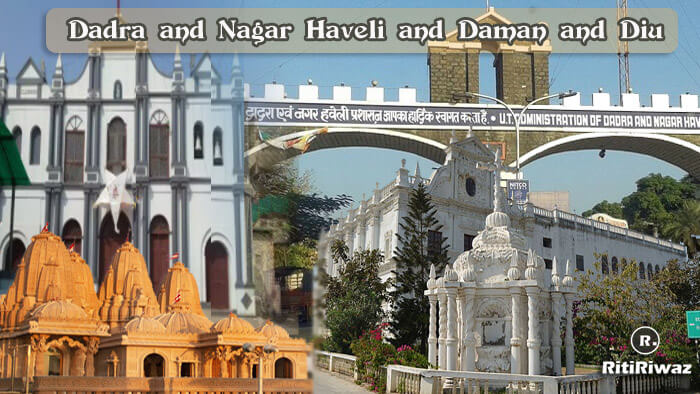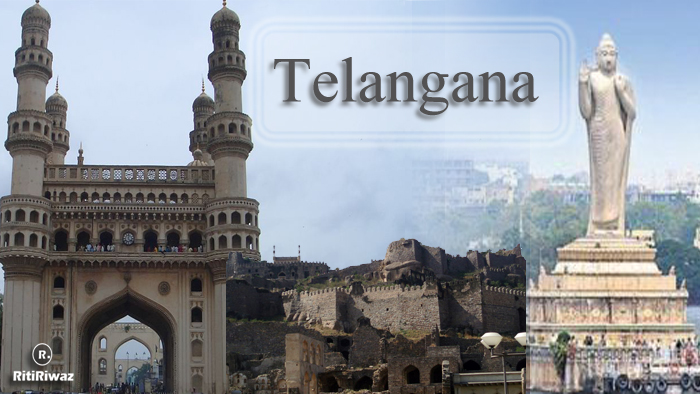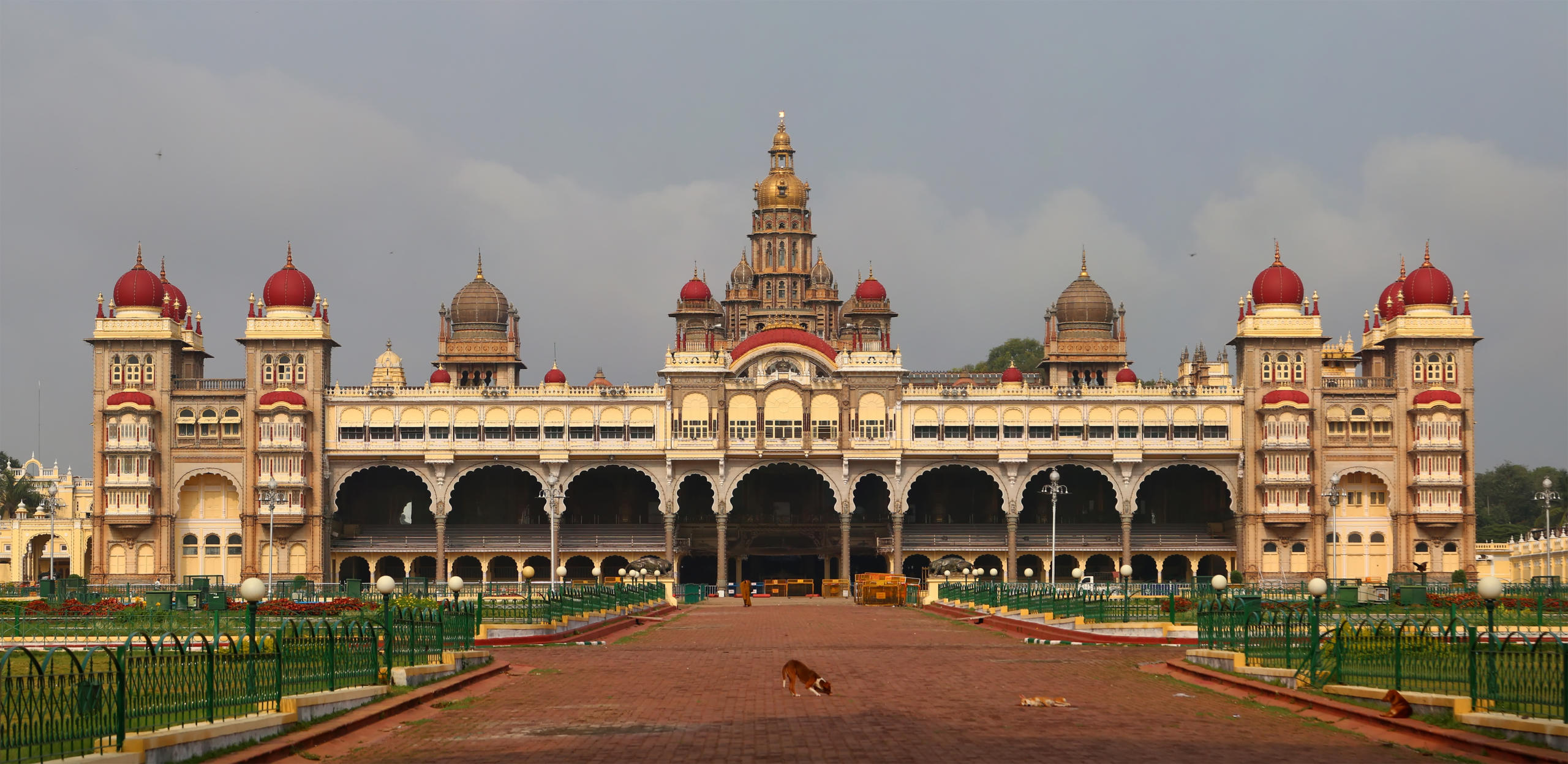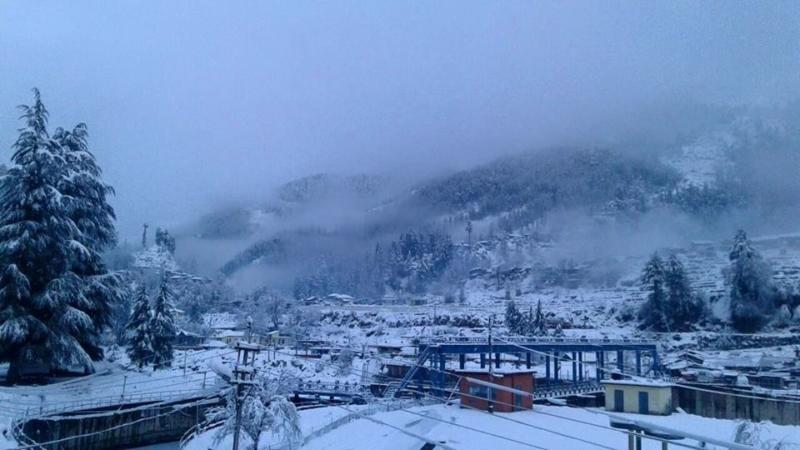Uttar Pradesh (UP)
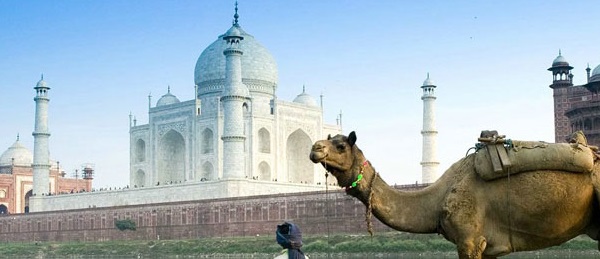
Uttar Pradesh invited to witness the history and culture of India. The ancient most states of India, Uttar Pradesh is said to be the founder of India as a nation. The state has another distinction of being a favored destination for tourists all over the world. The history of Uttar Pradesh dates back to prehistoric times when Ramayana and Mahabharata were written. One of the earliest civilizations is also found here. Aryans came to Uttar Pradesh and settled here permanently. The real taste of Uttar Pradesh can be tasted only by visiting the state. So visit Uttar Pradesh soon.
Situated in the northern part of India, it has the distinction of being the most populous state of India. In terms of area, it is the fourth-largest, among all the states. The wealth of its monuments, the mystical call of its mountains and lakes, and the religious fervor that it evokes, have rendered Uttar Pradesh, one of the fascinating states of the Indian Union. Whether one is on a spiritual quest, or in search of adventure, or just on a curiosity trip, Uttar Pradesh has something to offer to everyone.
Uttar Pradesh offers an endless array of attractions, to the tourist by way of monuments, health resorts, mountain peaks, a wealth of ancient temples and viharas, rich flora and fauna, fascinating rivers, and captivating valleys. Agra, Ayodhya, Sarnath, Varanasi, Lucknow, Mathura, and Prayag combine religious and architectural marvels; Nainital, Mussoorie, Ranikhet, and Almora are hill resorts of rare charm; Corbett and Dudhwa National Parks head a long list of wildlife reserves and sanctuaries; Yamnotri, Gangotri, Kedarnath, Badrinath, Hemkund and the Pindari Glacier, enfolded within the Himalayan ranges, offer a combination of adventure, pilgrim centers, and natural beauty.
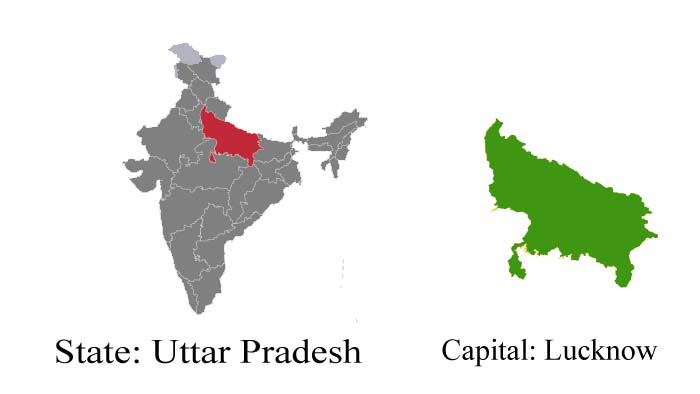
Fast Facts :
-
Area: 240,928 sq km
-
Capital: Lucknow
-
Population(2011 census): 19,95,81,477
-
Principal Language: Hindi and Urdu
-
Major Cities: Sarvasti, Vrindavan, Mathura, Sarnath, Kushinagar, Ayodhya, Gokul, Bundi, Lucknow
-
State Emblem: Emblem of Uttar Pradesh

-
State Animal: Barasingha (Rucervus duvaucelii)
-
State Bird: Sarus crane (Grus antigone)
-
State Tree: Ashoka (Saraca asoca)
-
State Flower: Palash (Butea monosperma)
- Uttar Pradesh – Culture and Tradition
Tourist Attractions of Uttar Pradesh:
Agra :
The Taj Mahal at Agra is, of course, the best place to start with. This superb specimen of Mughal architecture is veritable poetry in stone constructed by Shahjahan in memory of his wife Mumtaz. Located 40 km away is Fatehpur Sikri built by Akbar.
Fatehpur Sikri :
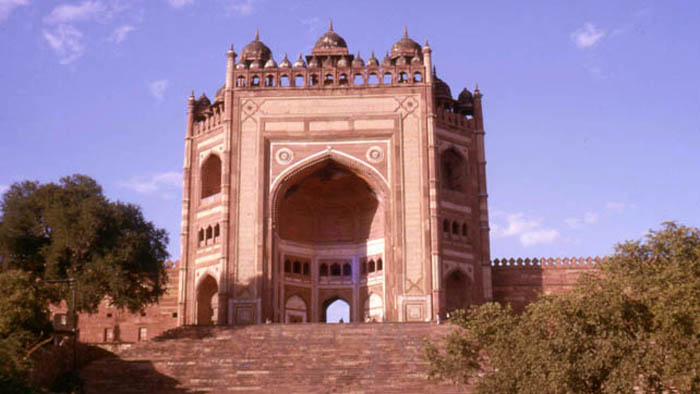
Situated at a distance of 40 km from Agra, Fatehpur Sikri has the mausoleum of the famous saint Sheikh Salim Chisti. The mausoleum is on the premises of a mosque and was built during the reign of Akbar.
Lucknow :
Lucknow is a city synonymous with the Nawabi Culture. The imperialistic splendor and magnificence of the Nawabi Era have been glorified and eulogized down the ages by writers, poets, and historians alike. At the same time, its mystical elegance and amorous ethos have caught the fascination of many world-famous romantics. Known for its Adab and Tehzeeb (cultural refinement), Lucknow is also associated with its legendary hospitality, leisurely moods of life, fabled edifices steeped in history, world-renowned cuisine, and exquisite Sham-e-Avadh.
Bara Imambara :
Built like a fort, this huge and elegant building is also called the Asafai Imambara. This building was built in a famine relief program in 1784 by Nabab Asaf-Ud-Daulla. The structure took six years to be completed. Just as we enter the building there is a hall almost fifty meters long and 17 meters wide. The architecture of this 15-meter high room is unique and unparalleled. Here the Nawabs used to hold their ‘Darbar ‘ or their public hearings. It is said that this hall is the world’s largest arched room without any pillars.
The upper part of this building is in the shape of honey bees comb and is surrounded by the famous ‘Bhul Bhulliya‘. This has got numerous steps and there are 489 doorless galleries that are similar in appearance. People get lost in these galleries. The largest of these mazed rooms and galleries have a specialty that even when a paper is torn on one of the end sit is heard on the other end. In the courtyard of Bara Imambara is the Sahi Masjid which stands tall on a platform, non-Muslims are not allowed here. Just beside the Sahi Masjid is the bottomless well. The BaraImambara also has the tomb of Asaf-Ud-Daulla.
Varanasi :
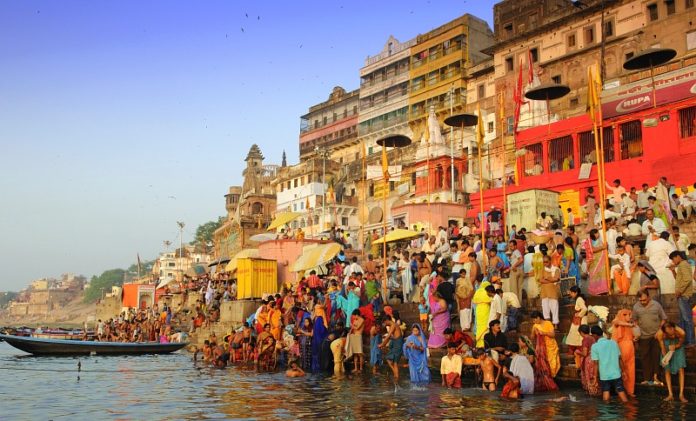
Varanasi is one of the oldest living cities in the world and the ultimate pilgrimage for Hindus, who believe that to die in the city is to attain instant salvation. Varanasi is the tract of holy land lying between the Ganga and the Assi rivers. The Assi river also flows into Ganga. Varanasi is also known as Kashi, the city of light since one of the twelve ‘Jyortinglinga’s is installed here. Varanasi has been a great cultural center, especially in the fields of music, learning, and the craft of silk weaving.
Kushinagar :
Kushinagar is situated in the north Indian state of Uttar Pradesh, 51 km off Gorakhpur. The place, which is famous for the Mahaparinirvana (death) of Lord Buddha, has been included in the famous Buddhist trail encompassing Bihar, Uttar Pradesh, and Nepal.
Taj Mahal :
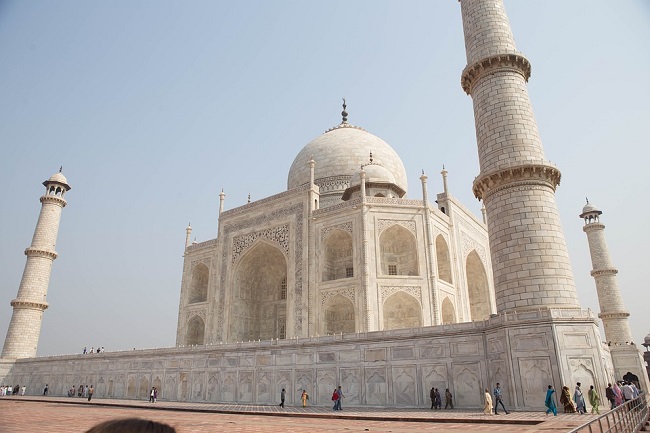
The crowning jewel of Indo-Islamic architecture, the Taj Mahal is one of the world’s most beautiful and beloved structures. The monument was built in Agra, India, for Mumtaz Mahal, the favorite wife of Mughal emperor Shah Jahan. Construction of the tomb began in 1632 and employed more than 20,000 laborers for 20 years. During the reign of Shah Jahan, the structure was known simply as the rauza, the tomb. Later, the mausoleum would be called the Taj Mahal, a derivative of the name Mumtaz Mahal.
Agra Fort :
Though Agra is more famous the world over as the city of Taj, Agra Fort is another dimension to the city that attracts tourists in hordes. Built by Akbar in Red Sandstone when he was through with the consolidation of his power after accession to power in 1654, Agra Fort worked both as a military strategic point as well as the royal residence.
Many of the palaces inside the fort were later added by the next generations of Mughal Emperors like Jahangir and Shahjahan. Most of the buildings within the Agra Fort are a mixture of different architectural styles. The assimilation of these different styles has given the buildings within the fort a distinctive look. For instance, the Jahangiri Palace built by Akbar is a good blend of Islamic (Persian) and different local Hindu styles. Other buildings either have a mixed style or conform predominantly to the Islamic style.
Getting There :
- By Air: Lucknow, the capital of Uttar Pradesh, is well connected by air with New Delhi, Patna, Calcutta, and Mumbai.
- By Rail: Lucknow is an important junction of the Northern and North Eastern Railways. It is well connected with all the important cities of India.
- By Road: Lucknow is well connected with New Delhi (497 km), Agra (363 km), Calcutta (985 km), Kanpur (79 km), and Allahabad (225 km).



